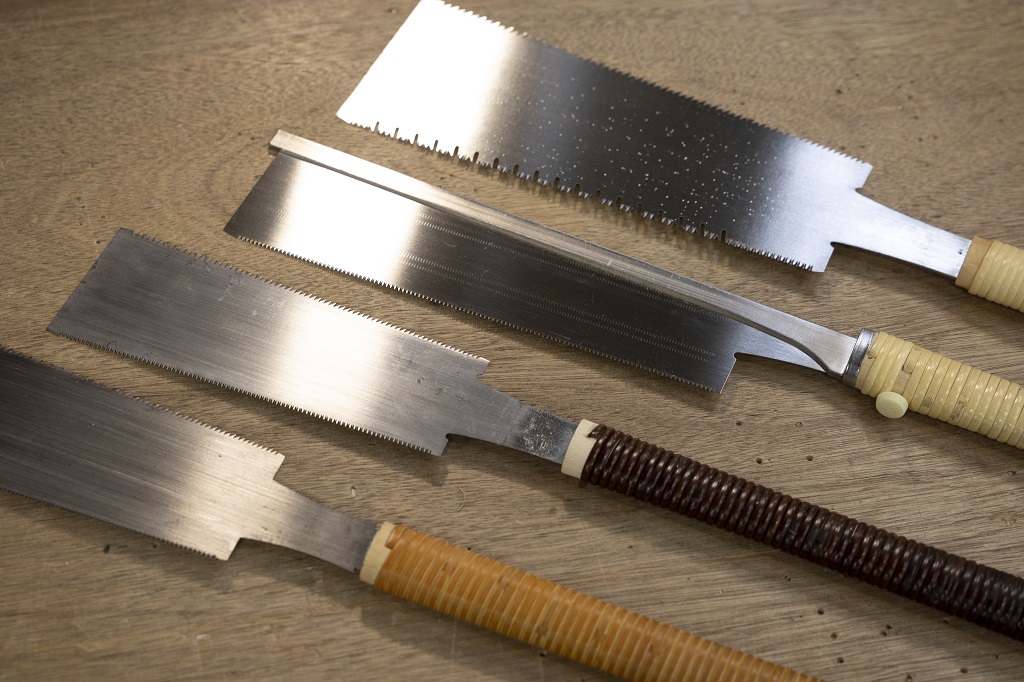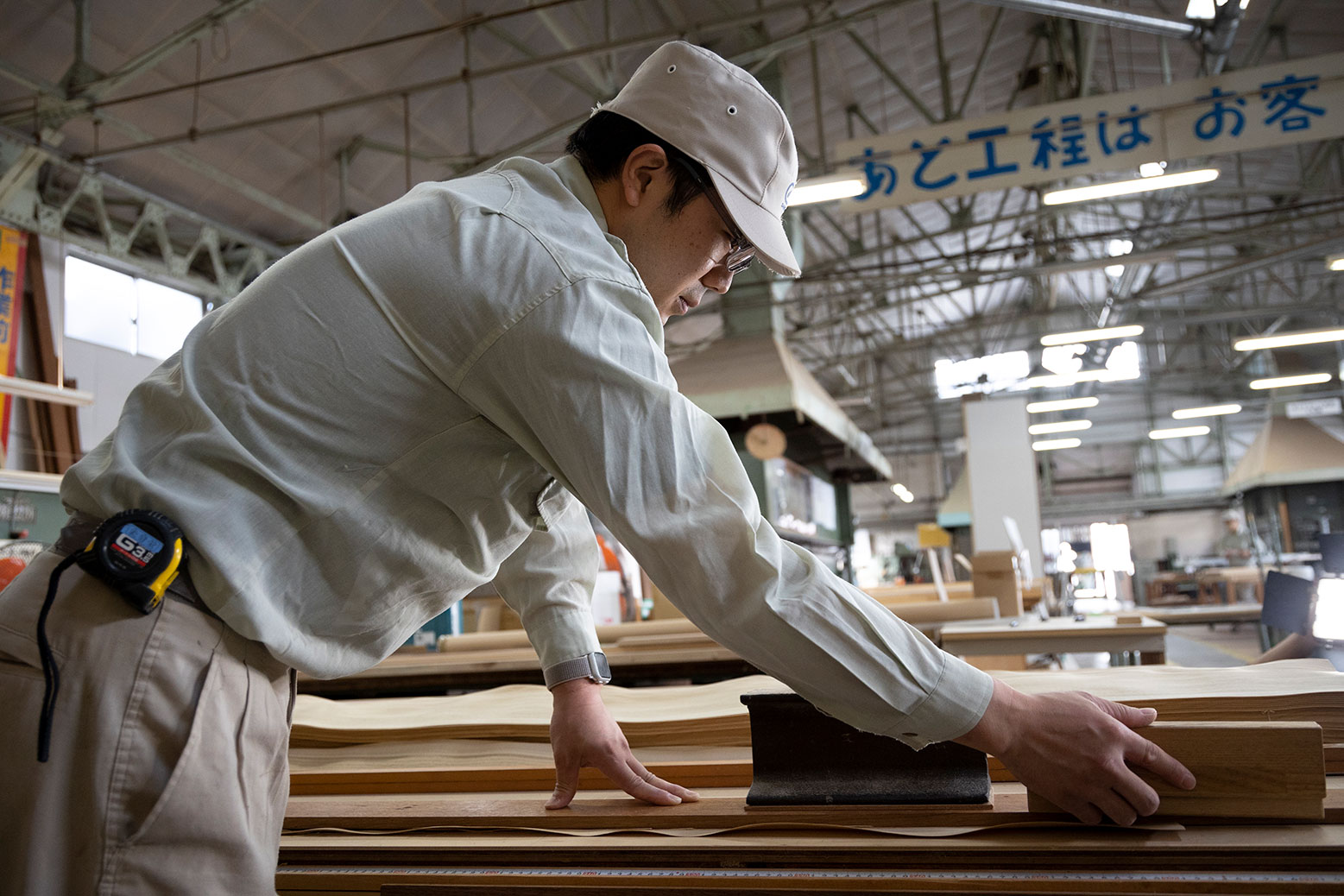Woodworkers' Skills
Trees are living things. If handled incorrectly, wood can change in ways that affect the quality of the completed work.
Tokyo Mokkoujou Arts & Crafts Furnishings is a group of highly experienced woodworkers with extensive knowledge of every woodworking process, from dressing and treating lumber to ensure uniform wood grain and quality, veneering, joining, cutting and assembly of making products, and color matching of paints and stains.
Here, the woodworking technologies and skills developed and refined by Shimizu over its long history are passed on to future generations. This page introduces some of the skills of the woodworkers that are on proud display throughout Tokyo Mokkoujou.

Inspection of veneer sheets

Veneer sheets are paper-thin slices of wood measuring 0.2 mm to 1.5 mm thick. Woodworkers inspect and select these sheets one at a time, calculate how many veneer sheets to glue on to the base to create the plywood, then cut them so the wood grain and the ends of the sheets are as close to parallel as possible. Key points in this process involve carefully checking for discoloration, cracks, or other problems that might have negative effects on the finished plywood and lining up the veneer sheets, so they are perfectly matched.
Veneering
“Veneering” refers to the process of gluing veneer sheets onto the base such as plywood or nonflammable boards. Veneer sheets of different materials have different traits; they can stretch or shrink after pressing. Woodworkers arrange the sheets while checking on these traits. For example, when using sheets of a material they expect to stretch after pressing, they position the sheets with a narrow space between them, rather than flush against each other. It takes a lot of experience to know just how much space to leave. This process is thus highly dependent on the skills of individual woodworkers.

Dressing and treatment
“Dressing” refers to sawing round timber and large blocks of timber into usable pieces. Dressing and treatment are needed to ensure that the wood grain and quality of the material are uniform, and both processes require extensive knowledge of lumber and the intuition that comes from many years of experience. For example, the process of curving parts such as pieces of frames and edges, also known as “molding,” requires knowledge of where to start and where to finish grinding, all while keeping the final design in mind. It also requires the skill to choose the correct type of blade from hundreds of available options and to operate the grinder with a clear idea of how the finished piece of lumber should look.

Fitting lumber

Although basic assembly methods exist, woodworkers need to consider joints and treatment methods case by case, in practice, and make the necessary adjustments for the different forms and materials used for each project. This is both a challenge and the source of great fascination to a woodworker. The pressure to meet delivery times while doing painstaking work puts a premium on being “quick and precise”—the motto adopted by our woodworkers. Their skills have been widely recognized, including numerous awards in the Skills Grand Prix and the National Skills Competition.
NC router

This router is used for numerically controlled machining based on a computer. It is useful in creating complex curves, but requires a great deal of skill and experience, including the ability to identify the traits specific to each piece of lumber, thus ensuring a product with cleanly cut surfaces.


